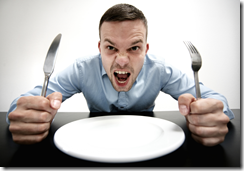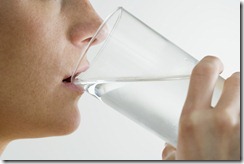A Carb-Calorie Catharsis: How to Stay Full while Shedding Fat
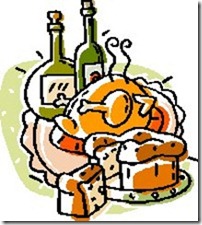 It’s holiday season once again, which is generally a good thing. Unfortunately, much of what I do during holiday season is eat, get a little fatter, and then eat some more. Evolutionarily, this was probably a good thing…our ancestors likely needed to eat more during the autumn so that they could store up fat to make it through the harsh winter when food would be less plentiful.
It’s holiday season once again, which is generally a good thing. Unfortunately, much of what I do during holiday season is eat, get a little fatter, and then eat some more. Evolutionarily, this was probably a good thing…our ancestors likely needed to eat more during the autumn so that they could store up fat to make it through the harsh winter when food would be less plentiful.
I, however, never run out of food. In fact, all I seem to lack in winter is the will to go outside when it’s cold. Thus, I simply spend more time eating in my nice warm apartment and less time doing any form of exercise. Thus, in addition to just staying healthy, I think it’s time for me to shed some fat!
I HATE Counting Calories
But when trying to lose fat, it’s the most efficient way.
I remember quite vividly some rather poor attempts on my part (when I was younger) at calorie-counting diets, and they’re not pleasant memories. The fact of the matter is that many major diets are based on calorie counting (think Weight-Watchers), and for at least some good reason: calories matter if you want to lose fat! I’m not saying that nothing else makes any difference, but the simple truth is that humans only lose weight when their bodies expend more calories than they ingest. You can change multiple parts of this equation (food intake, food absorption, metabolic rate, etc.), but calories will still matter. How then, can I go about counting calories without reliving the painful diet experiences of holidays past?
I think the answer lies in the primary failure of most low calorie diets, namely that people are almost always hungry when counting calories. And those of you who know me know that I’m not pleasant to be around when I’m hungry. So why do most low-calorie diets make us hungry?
There are a lot of actual answers to this question (a lot of which are hormonal), but the following 3 are the quite important:
- Our bodies don’t want to be in a calorie-deficit. Think about it – my survival for the immediate future always depends on having enough nourishment, and my body is evolutionarily programmed to make sure I try to eat enough. Sadly, we can’t change this fact, but we can find ways to mitigate our body’s perception that we’re starving.
- Most low-calorie diets are too low in fat and protein. Protein and fat are particularly filling (fat because it takes a while to break down in your stomach, and protein because our body can only use so much of it at a time). Moreover, if I’m not getting enough protein from my food, then my body starts finding it other places (like breaking down my muscles…).
- Most low-calorie diets don’t limit sugars and starches. For a variety of reasons, sugars and starches either fail to quench hunger or possibly make it worse. In particular, most processed grains and sugars provide practically no nutritional value, so our bodies know that we need to keep eating in order to find the proper nutrients.
In the end, a low calorie diet is always going to be at least a bit miserable, but there are ways to mitigate the pain. The best ways to make a low-calorie diet bearable are to eat enough protein and fat and limit sugars and starches…in other words, make it relatively low carb. You could eat a slice of bread that’s only 80 calories, but how many of us eat only one slice??? The urge to keep eating after that first slice is often all too tempting! I found that I generally ate fewer calories when doing the Atkins phase 1 diet, but it was much easier than just simply starving yourself because the lack of carbs made me less prone to bouts of hunger all day long.
Hence…
My Low Calorie – Low Carb Diet Plan
How many calories do you need per day? If we’re counting calories, then you need to know how many calories to eat every day in order to lose weight. Freedieting.com offers a convenient calorie calculator (it’s not perfect but it works). For me, it says that I need 1699 calories per day for maintenance and 1359 for fat loss. I know that I actually have a very fast metabolism (people are generally shocked by how much I continuously eat – especially at buffets), so I estimate my maintenance at about 1900 calories and shoot for 1500 calories to lose weight (roughly 20% below maintenance).
Calorie Counting: Once you’ve figured out what your calorie goal is, you can use MyPlate at livestrong.com to keep track of your calories. And…we’re ready for the foods!
Breakfast foods:
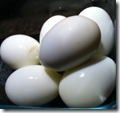 1. Egg Whites: Eggs are typically good breakfast foods. A boiled egg is only 70 calories, and a boiled egg without the yolk is only 15 calories!! You can eat 5 or 6 egg whites for breakfast while only using up 100 calories of your limit. I like to eat it with some salt or with a tablespoon of soy sauce (10 calories).
1. Egg Whites: Eggs are typically good breakfast foods. A boiled egg is only 70 calories, and a boiled egg without the yolk is only 15 calories!! You can eat 5 or 6 egg whites for breakfast while only using up 100 calories of your limit. I like to eat it with some salt or with a tablespoon of soy sauce (10 calories).
2. Protein Shakes: Another good option for breakfast is protein shakes. It’s easy and quick to make and you can get a large variety of different flavors. I like to make a simple one with 1.5 scoops of protein powder and 1/4 cup of milk or coconut milk with 8 oz of water. That’s 200 calories for the whole thing.
Snacks:
1. Low Calorie Cheeses: Luckily for us, Laughing Cow makes some tasty low calorie cheeses that are individually packaged in bite-size portions. The 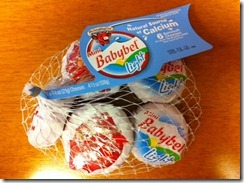
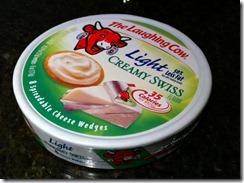 Babybel Light is 50 calories per piece (21 grams) and reminiscent of an unaged Gouda, and the Cream Swiss Light is a really a soft cheese spread that tastes very creamy, especially considering that each 21 gram wedge is only 35 calories.
Babybel Light is 50 calories per piece (21 grams) and reminiscent of an unaged Gouda, and the Cream Swiss Light is a really a soft cheese spread that tastes very creamy, especially considering that each 21 gram wedge is only 35 calories.
2. Apples and Berries: A medium sized apple with skin is around 80 calories and a cup of strawberries is around 45 calories.
3. Vegetable Sticks: Celery and zucchini are your best friends (close relatives like squash work perfectly too)! I think you can pretty much discard any calories from celery and an entire medium-sized zucchini is only 30 calories. Maybe dip in some calorie free dressing (like the ones from Walden Farm, described more below). By the way, pickles and cucumbers are also super low in calories.
Lunch/Dinner:
1. Salad: Yes, I know you feel like a rabbit eating leaves everyday, but vegetables are undeniably low in calories and high in micronutrients. Be careful not to get vegetables like corn, potatoes, chickpeas or carrots in your salad as they can raise the calories in your salad very quickly. Zucchini squash is one of my favorite things to put into a salad. One cup of sliced zucchini is only 30 calories! I find a few olives can also add a lot of flavor to the salad, although too many olives can hike up the calorie count too.
2. Salad Dressing: Low calorie dressings are hard to come by. A tablespoon of olive oil is 120 calories. I’ve always found that fact really depressing, since good olive oil makes the salad taste so much better to me. Walden Farms makes a line of calorie free dressings, but not all of them taste great. The Raspberry Vinaigrette seems to be a good safe option.
3. Grilled Salmon or Chicken: A 5oz salmon fillet is only 250 calories. You can eat it in your salad or by itself with some mustard (pretty much 0 calories) or calorie free hot sauce (I like Crystal Hot Sauce). Soy sauce, as usual, is also a good condiment to add some flavor without adding many calories. Grilled chicken is also low in calories, especially if you get it without the skin. A 5oz skinless piece of chicken breast is 150 calories. In fact, you can cook both the salmon and the chicken yourself easily on a grill (or simple, small, and cheap Foreman Grill if you’re in an apartment), and take it for your lunch.
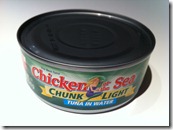 4. Tuna Salad: There are various tuna salads – you can buy them or you can make them. A can of tuna is 5oz and 100 calories and is packed with protein. I’m going to put up my favorite tuna salad recipe later this week.
4. Tuna Salad: There are various tuna salads – you can buy them or you can make them. A can of tuna is 5oz and 100 calories and is packed with protein. I’m going to put up my favorite tuna salad recipe later this week.
5: Deli Turkey Slices: I know what you’re thinking – slices of turkey meat doesn’t sound great by itself as a meal. But, it sounds more appetizing if served as part of a meat plate with some Babybel cheese, a bit of pickles, and maybe a few grapes or olives. A whole pound of Boars Head Mesquite turkey deli meat is only 480 calories, and I know I can’t eat a whole pound in one go! Like tuna, turkey is almost entirely protein.
6. Low Calorie Noodles: I wrote a post a back in August on Low Carb Pasta, and the great thing is that all those pastas were low calorie as well as low carb. Shirataki noodles (or Miracle noodles) have 0 calories and zucchini noodles are 20 calories per cup so you can eat both to your heart’s content.
Drinks
1. Diet Sodas: Obviously diet sodas have no calories, and there’s a huge variety. Be careful, though, if you find that the diet sodas make you hungrier. I personally like Vitamin Water Zero . There are also several drinks out now sweetened with Stevia instead of other artificial sweeteners.
2. Chicken Broth: This is seriously low calorie and makes me feel like I’m not just drinking water. A cup of chicken broth is just 10 calories (it varies slightly from brand to brand).
3. Almond milk: A cup of normal fat-free milk is 90 calories, but a cup of almond milk is just 40 calories, and it tastes pretty good in my opinion. It’s also good to put into protein shakes instead of milk. Just make sure you buy the unsweetened variety (it doesn’t matter if you get the original or the vanilla flavor as they both taste pretty much the same).
4. Tea and coffee: Of course, tea and coffee are both also calorie-free as long as you don’t add any milk or sugar into them.
5. Water: Remember to drink plenty of water!!!
Must I Exercise?
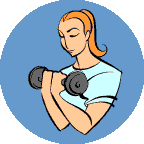 This is an entirely different post, but while I’m talking about shedding fat and counting calories, I feel like I should mention it. Unfortunately, our bodies are not as selective as we might like about whether to lose fat or muscle, so in order to lose more fat and less muscle, you should definitely put in some exercise. But don’t worry – it doesn’t need to be extremely time-consuming. No running or aerobic exercise is required (although a bit doesn’t hurt). You also don’t need to join an expensive gym or buy hardly any equipment (unless of course you want to seriously build some muscle!). Start light – buy a 5lb weight and just do some gentle arm curls with it. You can also do some push ups (do push ups against the wall to start with), sit ups/crunches, and squats. Try doing this for 15 to 20 minutes 3 times a week.
This is an entirely different post, but while I’m talking about shedding fat and counting calories, I feel like I should mention it. Unfortunately, our bodies are not as selective as we might like about whether to lose fat or muscle, so in order to lose more fat and less muscle, you should definitely put in some exercise. But don’t worry – it doesn’t need to be extremely time-consuming. No running or aerobic exercise is required (although a bit doesn’t hurt). You also don’t need to join an expensive gym or buy hardly any equipment (unless of course you want to seriously build some muscle!). Start light – buy a 5lb weight and just do some gentle arm curls with it. You can also do some push ups (do push ups against the wall to start with), sit ups/crunches, and squats. Try doing this for 15 to 20 minutes 3 times a week.
When Does the Diet End?
Although eating low carb is more of a lifestyle than a diet, counting calories thankfully need not last very long (personally, I’ll probably eat enough at Christmas to need to start all over…). Try going low calorie and low carb for 2-3 weeks and see what results you get. Don’t get discouraged if you end up cheating one day – just start again the next day. It’s too easy just to give up immediately if you stress out and eat badly one day. In fact, you can counteract the extra calories eaten during one day by eating less the next day (your body doesn’t necessarily work on 24-hour cycles). Remember, this is not a permanent lifestyle change, and you can convince yourself to do anything for 2-3 weeks!
